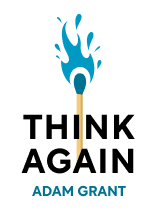

This article is an excerpt from the Shortform book guide to "Think Again" by Adam Grant. Shortform has the world's best summaries and analyses of books you should be reading.
Like this article? Sign up for a free trial here.
Do you consider yourself an open-minded person? What exactly does it mean to be open-minded?
Keeping an open mind means approaching a point of view from a place of humility and curiosity (as opposed to certainty). This, in turn, requires you to be comfortable with being wrong so that you can examine what you really know without reservations.
Here’s how to be more open-minded, according to Adam Grant.
Method #1: Examine Your Views
The first method for how to be more open-minded is to examine your views. Grant suggests examining your views by assessing what you know, investigating new information, and possibly drawing new conclusions based on your research.
First, reframe your views as hypotheses. This will help you see them as questions to investigate rather than statements of fact.
Then, experiment with the hypotheses by gathering new information. Grant recommends making an effort to seek out information that contradicts your existing beliefs.
Write down your original hypotheses, how they have changed, and your new conclusions. Obtaining this new information can change the direction of your thinking. New information that disproves your initial assumptions can change how you think about your original beliefs.
Method #2: Find a Balance Between Doubt and Confidence
Having too much confidence in your beliefs and abilities makes you too assured that all your views are correct, but too much doubt makes you fearful and unable to act.
When your doubt and confidence are balanced, you have faith in your abilities and can acknowledge that you may have more to learn—you’re neither stuck in your convictions nor paralyzed by self-doubt. Grant says there are several ways to balance your level of doubt and confidence:
Be Honest About Your Abilities. When you consider yourself capable of handling a task or mastering a concept, you run the risk of becoming too self-assured and too focused on what you already know. As a result, you don’t think about your weaknesses or knowledge gaps, which will make it difficult for you to improve your skills or integrate new information.
Acknowledge Your Limitations. Acknowledge your limitations positively—without putting yourself down. Instead, Grant encourages you to make an effort to view your weaknesses as opportunities to learn, grow, and improve yourself.
Discover Your Knowledge Gaps. Put together all the information you have about a subject and try to explain it to another person—if they have trouble understanding you or seeing the logical connections in your arguments, that’s a strong indication that you may need to do more research into the topic.
Method #3: Consider Complexity
Assuming that you have a complete understanding of a topic causes you to believe that your views apply in every circumstance and that there are no other valid interpretations. These beliefs dismiss the complexity of the issue at hand—the many circumstances or applications that might challenge your viewpoint. For example, you may believe that your neighborhood grocery store is charging too much for their goods without considering why they might do this—perhaps they’re forced to charge higher prices to keep up with their rising cost of rent.
On the other hand, Grant says, acknowledging the complexity of a situation initiates the Reconsideration Process: When you consider the many nuances of a problem, you cast doubt on your conviction that you have a complete understanding of the issue, which inspires you to consider new questions.
Grant suggests several methods for adding complexity to a topic:
Consciously Look at Different Angles. There can be different ways of interpreting the information available about a topic, and your point of view will become more nuanced if you consider different viewpoints. Making a conscious effort to look at these angles makes you open to new perspectives.
Question Your Understanding. Ask yourself if you fully understand the topic. Look into different resources to ensure you are up to date on the latest research and have a full picture of the topic.
Avoid Stereotypes. Stereotypes often stem from a lack of awareness about the complexity of the perspectives of others. Therefore, Grant suggests thinking hypothetically about what you would be like if you had a different background—you’ll likely come to realize that the experiences of others are much more complex than you’d assumed. He suggests some “hypotheses” to examine, such as: Could I be wrong about how I think about this group of people? Is it really true that all X people do Y? How does their background differ from mine, and how has that informed the different ways we live?

———End of Preview———
Like what you just read? Read the rest of the world's best book summary and analysis of Adam Grant's "Think Again" at Shortform.
Here's what you'll find in our full Think Again summary:
- Why the ability to reconsider is more important than precise knowledge
- How knowledge and expertise can narrow your thinking and limit your potential
- How to improve your ability to reconsider things in work and in life






